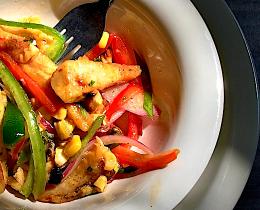Visit a Winter Farmers Market
The number of winter farmers markets is growing. The Farmer's Market Coalition reports that 15% of all markets remain open in the winter. The USDA's local food directory lists more than 2,700 winter markets nationwide. While winter markets have less variety than summer and fall markets, you may find root vegetables such as turnips, parsnips, carrots, and potatoes, as well as cabbage, winter squash, garlic, onions, and fruits that hold up to cold storage, like apples and pears. Some areas of the country are able to grow hardy greens throughout the winter, like kale and chard. In other areas farmers grow crops like spinach, salad mix, and herbs in greenhouses. Many markets also have vendors who sell meat, cheese, pickles, honey, and other products that are not seasonally dependent. To find a winter market near you, search on Local Harvest.
Join a Winter CSA
Farms that offer a community supported agriculture program in the summer may also run one in the winter, too. Winter shares may not be as robust as summer shares, but they are priced accordingly. These shares may include vegetables that store well, plus other products like eggs or meat. This is a great way to support farmers by giving them some income during a slower time of year. Local Harvest is the best source for locating a winter CSA near you.
Grow Something Yourself
It can be fun to experiment with growing food indoors during the winter. You can get serious and set up grow lights in a tent-style greenhouse, or keep it simple and try some herbs in pots on a sunny windowsill. There are also many kits you can purchase to help you get started. Begin with herbs, chives, scallions, microgreens, or sprouts—all great additions to your winter cooking. If you're feeling adventurous, you might try to grow ginger indoors so you have a winter cold remedy on hand when you need it.
Enjoy Pickles & Preserved Food
One of the best ways to extend the season is to preserve it. If you like to DIY, plan ahead and can, pickle, or freeze food during summer's bounty. If you have the space, build a root cellar or invest in a second refrigerator or freezer for more long-term storage space. Or search for local vendors of pickles, jams, jellies, or even frozen vegetables. Many farm businesses looking to maximize their income now offer these kinds of value-added products. Check local farmers markets and specialty food stores.
Consider Cold Frames
An approach for the devoted local foodie with the space to do it, a cold frame allows you to grow some food for yourself outdoors during the winter. Depending on where you live, spinach, beets, mustard greens, radish, and more can be grown in a cold frame. They will grow much more slowly than in summer, but there is nothing like eating your own salad when the snow is falling. You can't get much more local than that.



